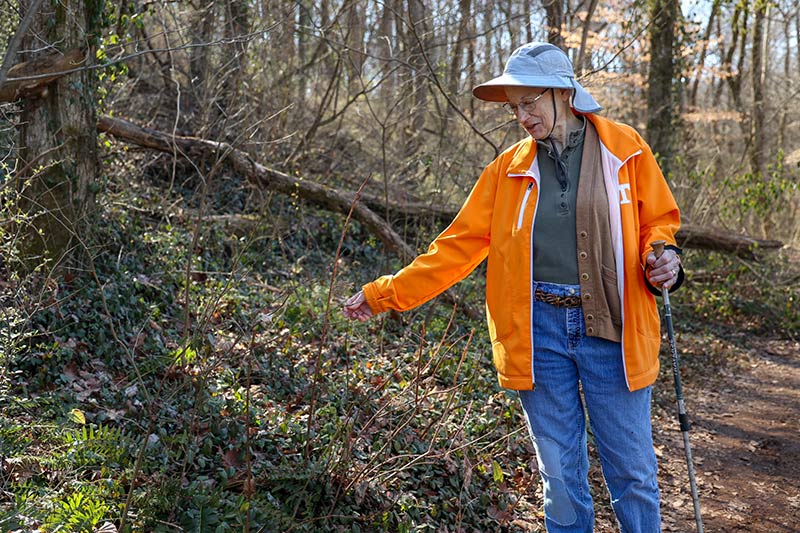Outdoor Explorers Help Grow Species Database
Canada geese, raucously honking, flew low over the Tennessee River in Knoxville.
On the boardwalk nearby, a group of hikers searched for tiny plants clinging to the cliffside.
Leaf cup plants soaked up the sun.
Virgin’s bower, a climbing clematis, twined around bare tree branches.
“This place is the leaf cup capital of the world,” botany enthusiast Lynne Davis said. She snapped a photo and added it to the iNaturalist app.
“It’ll be this big plant, 5 feet tall, with great, huge leaves and a teeny tiny flower.”
Davis and the others hiked here as part of a Tennessee RiverLine excursion to introduce people to the iSpy 652 project.
It’s a way to document plant and animal life along all 652 miles of the mainstem Tennessee River.
TVA supports Tennessee RiverLine in its goal to connect Valley residents to the outdoors and, in turn, connect river managers with a massive database of species information.
“TVA integrates and considers natural resources that make the Tennessee River Valley a great place to live and work,” Brad Collett, Tennessee RiverLine executive director, said. “We would not be here if not for TVA’s support and partnership.”
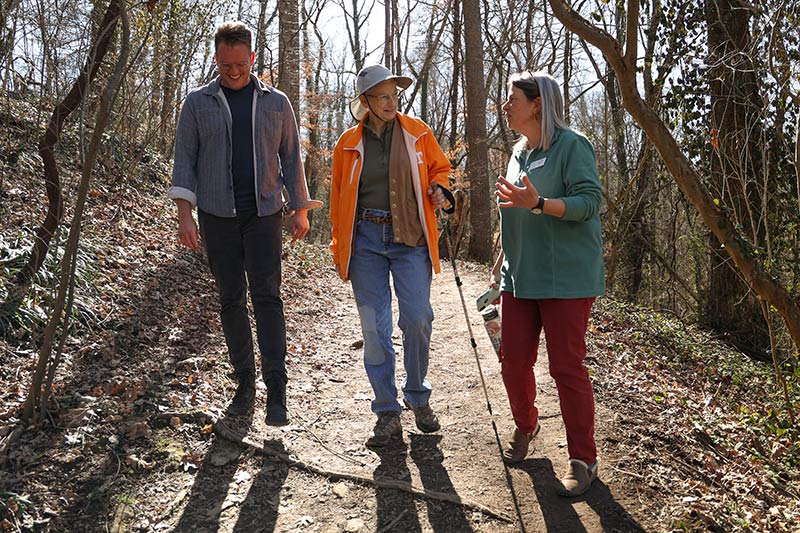
Danny Rose, Lynne Davis and Jennifer Webster walk to the Tennessee River during an iSpy workshop at Ijams Nature Center in Knoxville. (Photos by Susan Ehrenclou / TVA)
‘Best of the Best’
The Tennessee River flows through communities big and small, touching millions of lives.
On its way, it runs through five physiographic provinces – ecosystem types based on rock, soil and plant and animal species – creating some of the world’s most biodiverse habitats.
That means 263 species of fish – 58 found only in this watershed.
An impressive 75 species of crayfish.
And 125 species of mussels that act as livers of the rivers, turning silty muck to clear water.
“Southeast biodiversity is the greatest in the temperate world,” Bernie Kuhajda, Tennessee Aquarium aquatic conservation biologist, said at the Tennessee RiverLine Summit. “The Tennessee River is the best of the best.”
That’s why across the Valley region, TVA works to ensure river health. Its environmental stewardship of the region’s waters and lands improves lives and brings billions of dollars to local economies through recreation and conservation. It also saves billions of dollars through flood control and helps ensure TVA can produce power across the Valley region.
Tennessee RiverLine is part of the University of Tennessee Extension and its principal partners are the University of Tennessee and TVA.
“We’re an initiative to create and enhance 1.2 million acres of connected outdoor recreation experiences along the Tennessee River,” Tennessee RiverLine program manager Jennifer Webster said.
It’s a natural fit – for people, animals, water and businesses that depend on rivers.
“We value environmental stewardship, recreation access and economic development,” TVA Natural Resources director Rebecca Hayden said. “There’s an $11.9 billion annual economic impact – that’s $1 million per mile – from our river resources.”
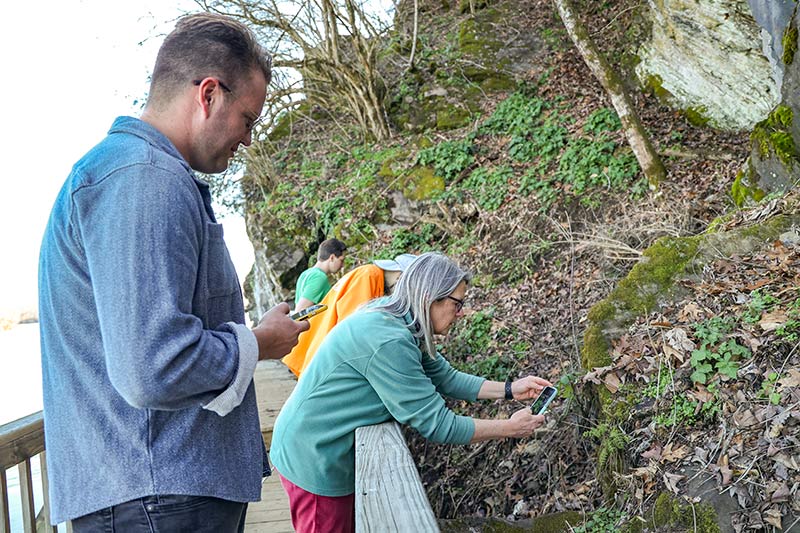
Participants in the iSpy workshop used smartphone apps to identify plants along a riverfront trail.
Collaborative Science
Through engagement, communities give back to the river that brings so much to them.
Traditionally, that’s meant litter cleanups.
The new iSpy project extends the ways people can observe and advocate for river ecosystems, Webster said.
Apps such as SciStarter and Zooniverse let users document what species they see.
Tennessee RiverLine staff focused on iNaturalist and worked with Will Kuhn, of Discover Life in America, to create the iSpy project. The iNaturalist app is already used widely, and its trained experts verify what public observers see.
“It’s open-source information, usable and viewable by other iNaturalist users and usable by the larger science community,” Webster said.
The app also ties into international databases such as the Global Biodiversity Information Facility, which has around 3 billion occurrence records about specimens all over the world, Kuhn said.
“It’s a great data source.”
As a result, people on both sides of the app benefit.
Those who snap a photo of a flower, leaf, fish, bird or bug with iNaturalist are the front-door users – they collect the data and learn along the way.
Scientists and land managers can then open the back door to access expert-verified observations about what species exist and when and where they migrate, hatch, bloom or appear.
They can query data based on species they manage, invasive species they hope won’t spread, boundaries of areas their agency oversees or seasonal migratory species.
“They’re looking at everything on iNaturalist,” Webster said. “These agencies have limited time and limited people to have eyes on everything.”
Harnessing the power of excited public observers has mutual benefits.
“(The public) can recognize how amazing the river in their backyard really is,” Webster said. “And through this tool, they can contribute to the management and the knowledge of the river. That’s pretty cool.”
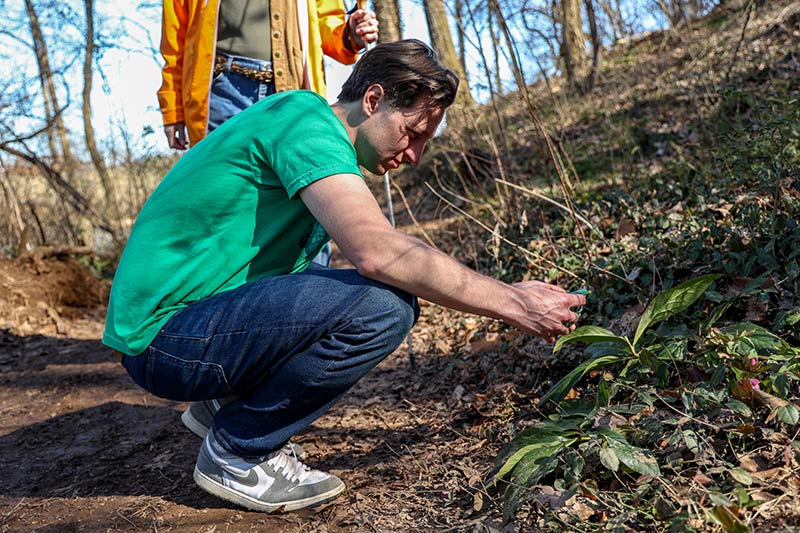
RiverLine intern Tyler Kirkendall kneels to get a close-up image of a plant.
Built for All the People
Engaging with river ecosystems by observing species and adding it to an app – where it’ll actually be useful – appeals to many.
“It’s a great community science tool to get people involved, especially at a regional scale,” said Danny Rose, a landscape architect and avid iNaturalist user.
He uses the app professionally to identify plants in restoration and native plant planning.
And he sees this program as a sign of how TVA and other organizations are building tomorrow together.
“I grew up here and I had very limited access or direct contact with the Tennessee River,” Rose said. “I think it’s really exciting – just understanding how we’re all connected by this 652-mile-long river corridor.”
Along the mainstem Tennessee River, Tennessee RiverLine, TVA, Discover Life in America and 23 RiverTowns host at least two events each year focused on stewardship and recreation.
It’s making stewardship more accessible to all – young and old and differently abled.
“We all know someone who can’t get into a kayak,” Webster said. “The idea was to encourage river usage of all kinds. It could be a riverside hike, walk or bike ride on river infrastructure trails, too.”
Events include BioBlitz, cleanups, hikes, festivals and more.
“TVA was built for the people of the Valley – and the Tennessee River is for all people,” Hayden said. “The collaborative work can’t be overstated.”
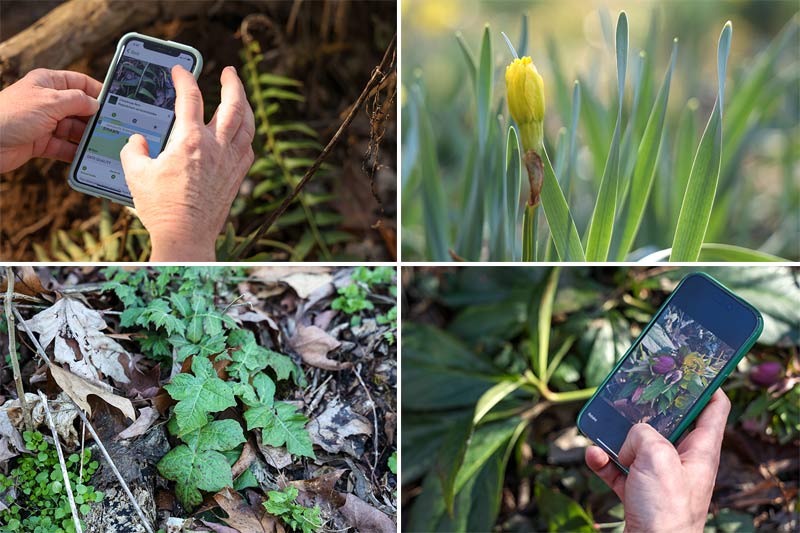
The iNaturalist app allows users to compare observations with a huge plant and animal database.
‘Pass It On’
Back on the riverside cliff, Davis, who volunteers with the Knoxville-based Native Plant Rescue Squad, described the joy of using iNaturalist.
“We’ve found things that we never knew existed,” Davis said. “Right around here – you didn’t know it was in your backyard all along.”
As she turned from photographing another cliffside plant, she pointed to an eagle’s nest across the river. The huge birds hunt fish for their massive chicks as she searches for species, known and unknown.
“Not only does iNaturalist and iSpy prompt discovery, it’s valuable data,” Davis said.
Webster nodded.
“Community science really means that you close the loop,” she said. “As a community member, you can gather data and that goes into a larger scientific effort.”
Over the long-term, it also means building a strong network of river advocates.
“We want our RiverTowns to really take ownership of the programming – make it fit for their community,” Webster said.
“I think it’s going to be a generational project,” Rose said. “It’s going to take time for people to rebuild familiarity (and) connection with the Tennessee … and understand that it is a safe, clean resource that they can recreate with and engage with.”
Davis tapped Rose on the shoulder and, grinning, pointed to a tiny fern.
“One of the cool things about being tuned in to the natural world is sharing it with people,” she said. “You know, you’re trying to pass it on.”
Photo Gallery
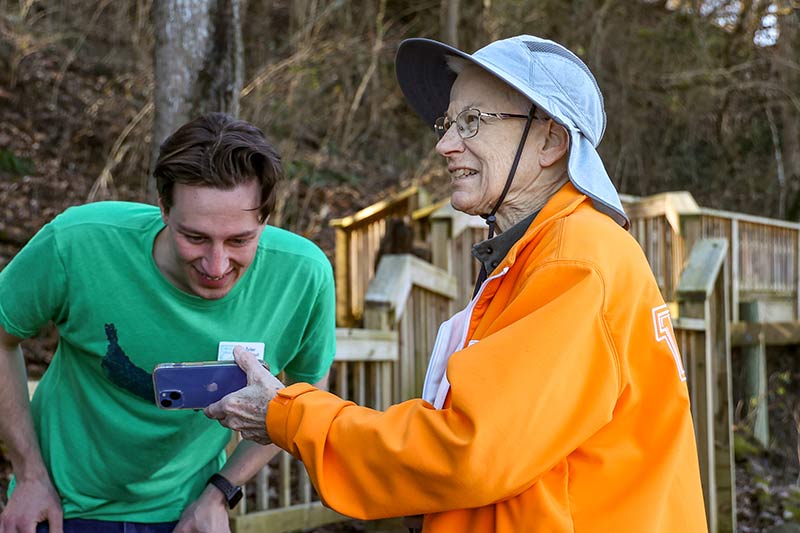
Davis shows Kirkendall information from her smartphone app.
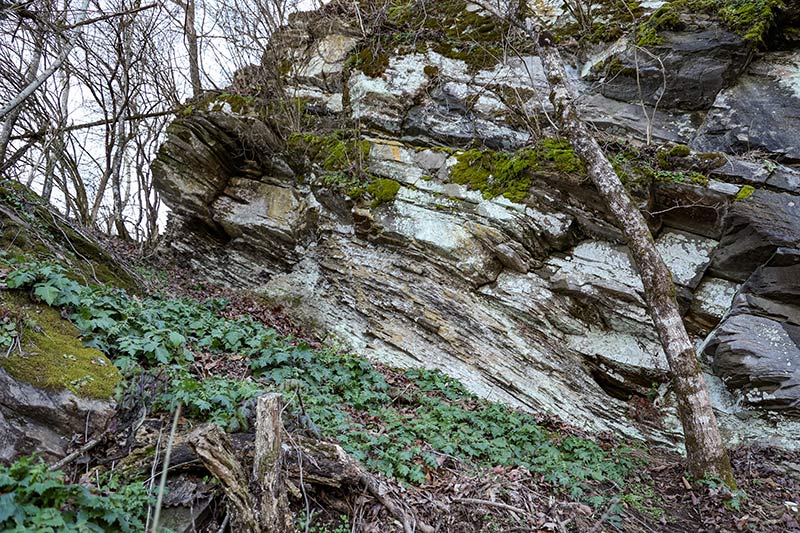
A cliff along the Tennessee River presented plenty of opportunities to identify plant species.
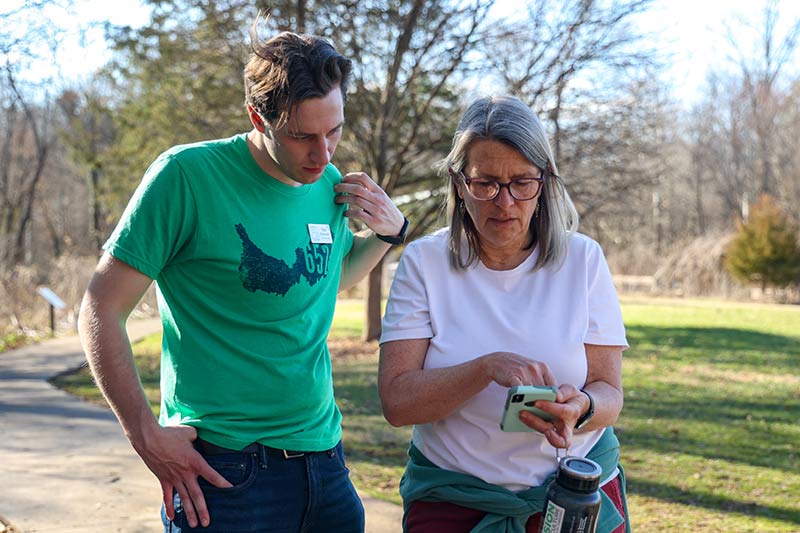
Kirkendall and Webster, Tennessee RiverLine’s program manager, refer to a smartphone app during the iSpy program.
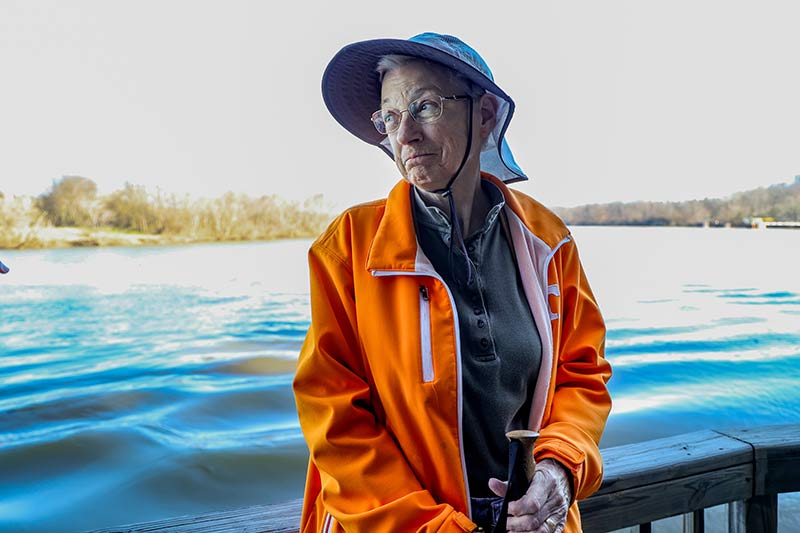
Davis enjoys the view along the Tennessee River.
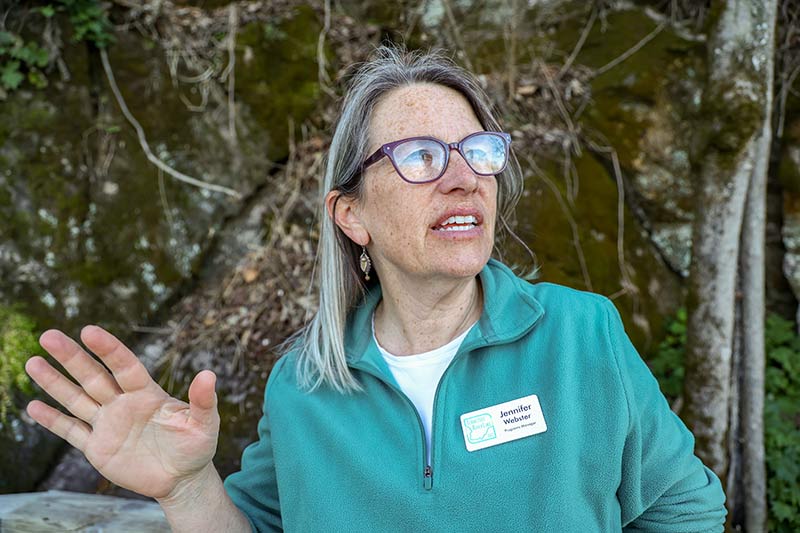
Webster chats with program participants.
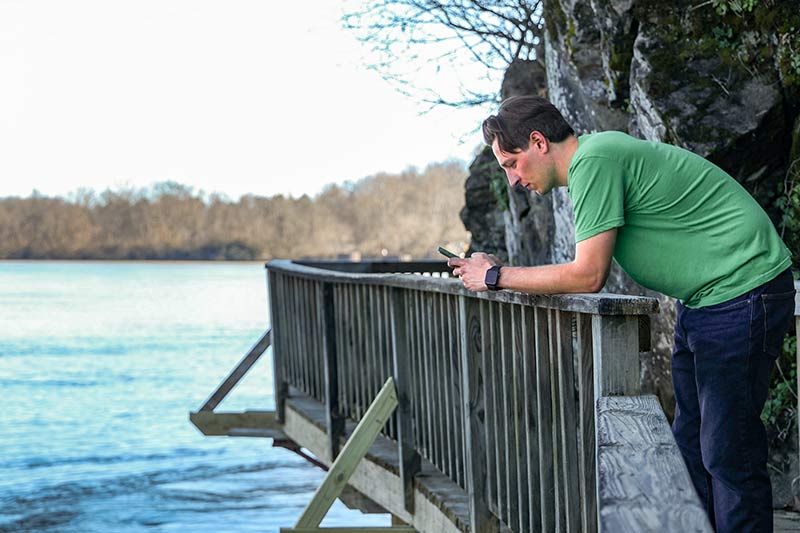
Kirkendall consults his app.
